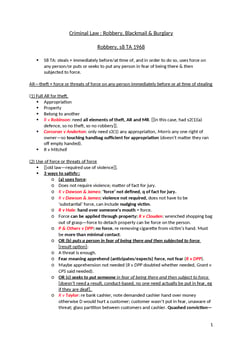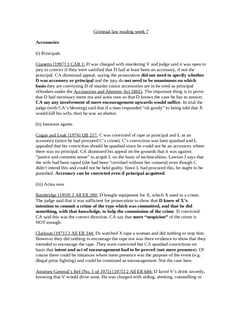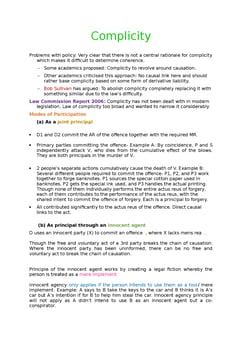Judgement for the case R v Lamb
Table Of Contents
KEY POINTS
It is manslaughter if death results from “an unlawful and dangerous act” on behalf of the accused,” and secondly it is manslaughter if death results from “an extreme degree of carelessness, negligence, on the part of the accused.”
FACTS
Defendant Terence Walter Lamb (Lamb) was charged with unlawfully killing Timothy O'Donaghue (O'Donaghue). During a playful interaction, Lamb pointed a revolver at O'Donaghue, with two bullets in the cylinder but not aligned with the barrel. Both seemed unconcerned by the situation.
However, when Lamb pulled the trigger, the cylinder rotated, aligning a bullet with the barrel, and O'Donaghue was fatally shot by the striking pin.
Lamb claimed that he had no intention to harm O'Donaghue and that the killing was a mistake due to his failure to understand the revolver's rotation and the belief that the bullets were not in the barrel.
COMMENTARY
Lamb's conduct of pointing the loaded revolver at O'Donaghue, even in jest, created an unjustifiable risk to O'Donaghue's life. By playing with a loaded firearm, Lamb demonstrated a lack of concern for the potential consequences of his actions, which resulted in O'Donaghue's death when the cylinder rotated, aligning a bullet with the barrel.
NOTES
Involuntary manslaughter is a form of homicide where the defendant did not intend to cause death or serious harm but acted recklessly or negligently, resulting in the death of another person.
Meanwhile, constructive manslaughter, a subcategory of involuntary manslaughter, arises when the defendant commits an unlawful and dangerous act that leads to the death of another person. The actus reus element typically involves a criminal act, but the mens rea element is limited to the intention to perform the unlawful act, rather than intending to cause death or serious harm.
ORIGINAL ANALYSIS
The defendant had been joking around with his friend and fired a gun at him, thinking that neither of the two bullets would be fired since they were either side of the striking pin. It was agreed that this was an accident.
The judge directed that it is manslaughter if death results from “an unlawful and dangerous act” on behalf of the accused,” and secondly it is manslaughter if death results from “an extreme degree of carelessness, negligence, on the part of the accused.”
The jury convicted saying that both grounds had been satisfied.
CA quashed the convictions, saying that the first ground was unfulfilled because: mens rea is an essential ingredient, without which there can be no assault and here there was clearly no mens rea.
The second ground is correct in law (that criminal negligence can allow a manslaughter conviction) but the defence that this was an understandable accident was never put to the jury, despite its credentials in showing how the act may not have been so negligent.
RELATED CASES
For Further Study on R v Lamb

A collection of the best GDL notes the director of Oxbridge Notes (an O...

Criminal Law notes fully updated for recent exams at Oxford and Cambrid...
Need instant answers? Our AI exam tutor is here to help.
Ask questions 🙋 Get answers 📔 It's simple 👁️👄👁️
Our AI is educated by the highest scoring students across all subjects and schools. Join hundreds of your peers today.
Get StartedRelated Product Samples
These product samples contain the same concepts we cover in this case.
| Criminal Law | Homicide Notes (20 pages) |
| GDL Criminal Law | Homicide 2 Involuntary Manslaughter Notes (11 pages) |
| Criminal law | Homicide And Intent Notes (16 pages) |
| GDL Criminal Law | Involuntary Manslaughter Notes (4 pages) |

 Since 2010, Oxbridge Notes has been a trusted education marketplace, supplying high-quality materials from top achievers at universities like Oxford, Cambridge, LSE, Harvard, and Yale.
Since 2010, Oxbridge Notes has been a trusted education marketplace, supplying high-quality materials from top achievers at universities like Oxford, Cambridge, LSE, Harvard, and Yale.